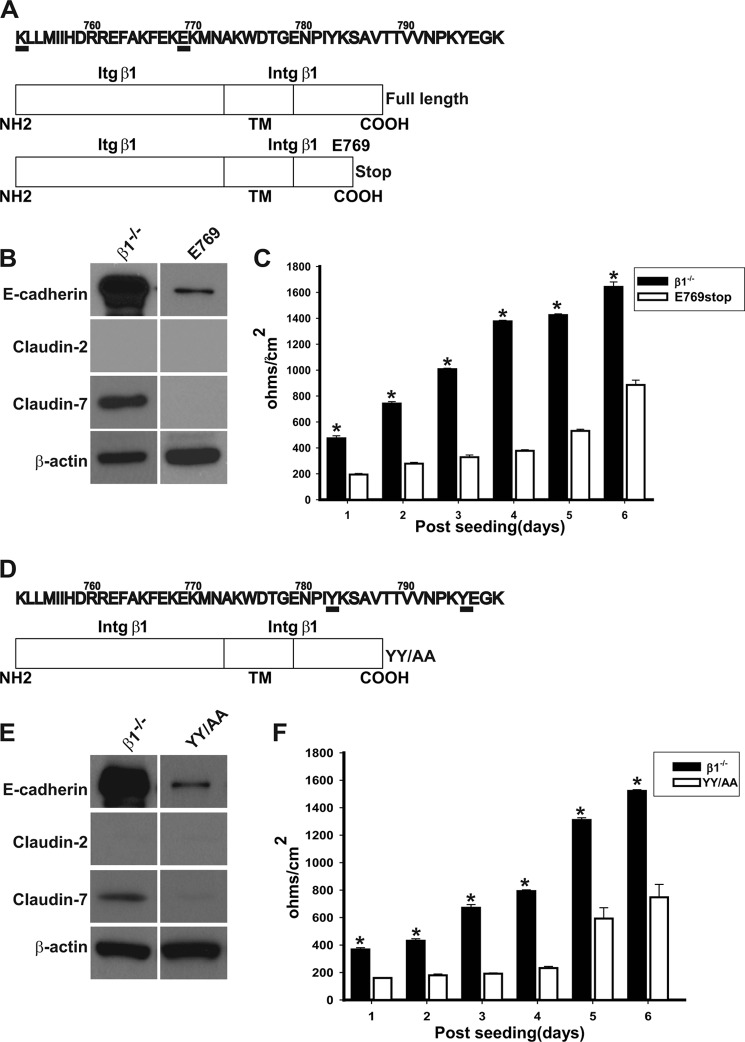FIGURE 7.
E-cadherin, claudin-2, and claudin-7 expression is regulated by specific domains of the integrin β1 tail. A, schematic of the full-length and deletion mutant of β1 integrin. A stop codon was introduced after Glu-769 to obtain the Glu-769 construct. B, equal amounts of whole cell lysate from PTCs stably expressing Glu-769 or control vector (β1−/−) were electrophoresed and immunoblotted for E-cadherin, claudin-2, or claudin-7. Protein loading was controlled for by immunoblotting for β-actin. C, TER was measured on PTCs stably expressing the Glu-769 truncation mutant or control vector (β1−/−) grown to confluency on transwell inserts for 6 days. Mean measurements of three independent experiments are shown; *, p ≤ 0.05 between Glu-769 and β1−/− PTCs. D, schematic of the YY/AA mutant. The 2 tyrosine residues Tyr-783 and Tyr-795 in the highly conserved NPXY motifs were mutated to alanine in integrin β1. E, equal amounts of whole cell lysate from PTCs stably expressing the YY/AA mutant or control vector (β1−/−) were electrophoresed and immunoblotted for E-cadherin, claudin-2, or claudin-7. Protein loading was controlled for by immunoblotting for β-actin. F, TER was measured on PTCs stably expressing the YY/AA or control vector (β1−/−) grown to confluency on transwell inserts for 6 days. Mean measurements of three independent experiments are shown; *, p ≤ 0.05 between YY/AA and β1−/− PTCs.

